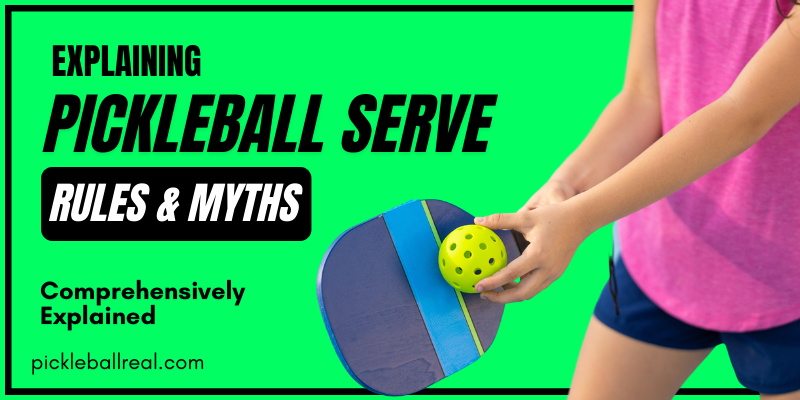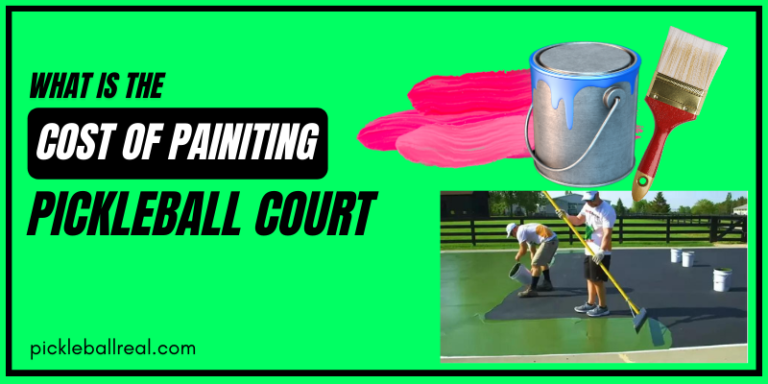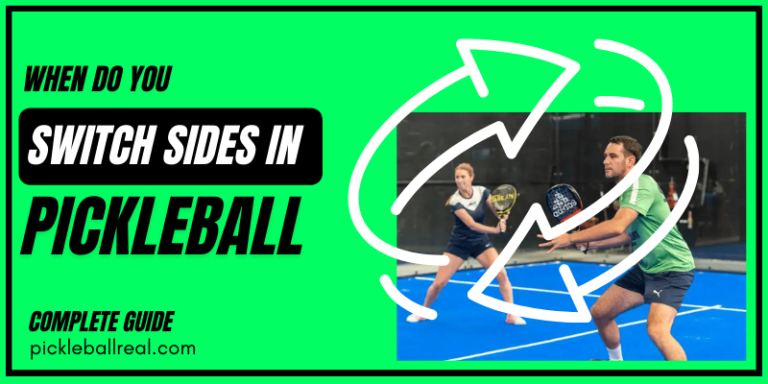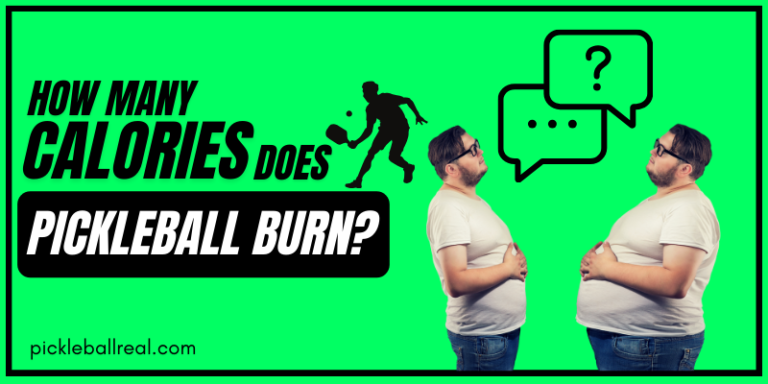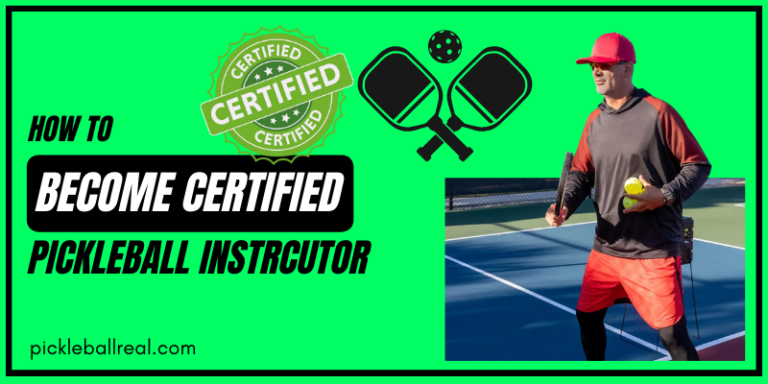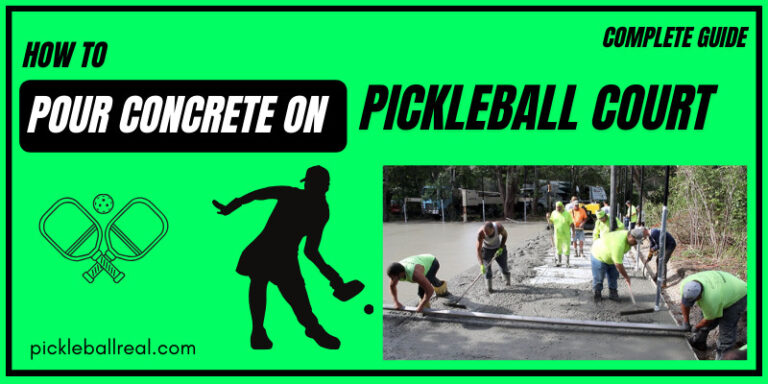Can You Bounce The Ball On A Pickleball Serve – Rules and Myths
If you’ve ever wondered whether you can bounce the ball before serving in pickleball, you’re not alone. This common question often arises among players, especially those who are new to the game.
No, you cannot bounce the ball before serving in pickleball. The serve in pickleball must be delivered without a bounce, similar to a tennis serve.
In this discussion, we’ll delve into the rules and nuances surrounding pickleball serves, including can you bounce the ball on a pickleball serve. So, let’s get to the bottom of this intriguing pickleball query!
The Rules of Serving in Pickleball
The serve in pickleball is like the opening move in a chess game. It’s the beginning of every point and can set the tone for the entire rally. So, let’s dive into the rules of serving in pickleball.
The Basics of Pickleball Serving
In pickleball, the server stands behind the baseline and delivers the serve diagonally across the court to the opponent’s service court. Unlike tennis, the serve must be made underhanded. That means no overhand serves are allowed. It’s all about that smooth underhand motion.
Below the Waist is the Way
Here’s another rule to remember: the ball must be hit below the waist. So, you can’t sneak in a high serve like you might in tennis. Keep it down there, waist-level or lower.
Let’s Keep It Clean
Now, it’s important to keep things fair and square. The ball, when served, should not touch any part of the server’s body or their paddle before it makes contact with the racket. No funny business there!
Getting the Diagonal Right
When you serve, the ball must travel diagonally from your side of the court to the opponent’s side. So, if you’re serving from the right side, you aim for the opponent’s right-side service court, and vice versa.
Double Trouble
If you’re playing doubles, there’s a rule that says you have to serve diagonally across the court. This means if you’re serving from the right side of the court, you need to aim for the right-side service court on the opponent’s side, even though there’s a partner standing there. It keeps things fair and evenly spread out.
Can You Bounce The Ball On A Pickleball Serve
The serve is a crucial aspect of pickleball, setting the tone for each rally. But can you bounce the ball on a pickleball serve? The answer is yes! In fact, it’s becoming more and more popular among players.
When it comes to serving in pickleball, there are certain rules and regulations that players must follow. According to the official rules of the game, a player must stand behind the baseline and make an underhand serve diagonally across the court.
The ball should be hit below waist level and should not touch any part of the server’s body or paddle before making contact with the racket.
Using a bounced serve offers some advantages. It can add unpredictability to your serves, making it harder for your opponents to anticipate where the ball will go. Additionally, it allows you to change up your pace and spin on each serve, keeping your opponents guessing.
To master the bounced serve technique, focus on timing and accuracy. Make sure you have good control over your paddle when hitting the ball after it bounces off the ground. Practice different spins and speeds to keep your opponents off balance.
Bouncing the ball on a pickleball serve is not only allowed but also adds another dimension to this exciting sport. By incorporating this technique into your game plan and practicing diligently, you’ll become a formidable opponent on any court! So why not give it a try?
Pros And Cons Of Using A Bounced Serve
When it comes to serving in pickleball, there is an ongoing debate about whether or not bouncing the ball before serving is advantageous. Like any technique, using a bounced serve has its pros and cons that players should consider.
| Aspect | Bounced Serve in Pickleball |
| Advantages | |
| Unpredictability | – Creates variations in speed, spin, and trajectory |
| – Makes it harder for the opponent to anticipate | |
| Increased Power | – Utilizes bounce momentum for extra force |
| – Potential to catch opponents off guard | |
| Disadvantages | |
| Skill Requirement | – Requires practice and precision |
| – Development of timing and control needed | |
| Risk of Faults | – Increased risk of faults if bounce is misjudged |
| – Possibility of hitting an illegal serve |
Whether or not you choose to use a bounced serve depends on your playing style and skill level. Some players find success with this technique by adding variation and power to their serves, while others prefer sticking with traditional non-bounced serves for simplicity and reliability.
Tips For Mastering The Bounced Serve
Now that you know bouncing the ball on a pickleball serve is indeed allowed, it’s time to learn how to master this technique. While it may seem intimidating at first, with some practice and focus, you can become proficient in executing a successful bounced serve.
1. Timing is Key: One of the most important aspects of a bounced serve is timing. You need to wait for the ball to bounce before making contact with your paddle. This requires patience and precise coordination.
2. Practice Consistently: Like any skill in sports, mastering the bounced serve takes practice. Set aside dedicated time each week to work on your serves and gradually increase difficulty as you improve.
3. Mix Up Your Serves: Incorporating variety into your serves keeps your opponents guessing and puts them on their toes. Experiment with different spin techniques or change up your placement on the court to keep things interesting.
4. Watch Your Footwork: Remember that footwork plays an essential role in executing an effective bounce serve. Position yourself correctly behind the baseline, stay balanced throughout the motion, and be prepared to move quickly after making contact with the ball.
5. Analyze Your Opponent: Pay attention to your opponent’s positioning and tendencies during matches. By observing their reactions or weaknesses when faced with a specific type of serve, you can adjust your strategy accordingly.
6. Don’t Neglect Control: While power is important in serving, don’t overlook control either! Focus on maintaining accuracy while adding velocity or spin to maximize effectiveness.
7. Stay Confident & Calm Under Pressure: Nerves can get in the way of executing a successful bounced serve during competitive matches but remember that confidence comes from preparation and practice!
By incorporating these tips into your training routine and consistently refining your skills through practice sessions or friendly games, you’ll soon have mastered this unique aspect of pickleball serving! So grab your paddle, head to the court, and start perfecting your bounced serve technique today.
Conclusion
In pickleball, the serve is an underhand stroke where the server must keep both feet behind the back line and strike the ball below their waist. The ball should be hit directly over the net without bouncing it on the ground before serving. Bouncing the ball before serving is not allowed in pickleball.
So, remember, when you’re getting ready to serve in pickleball, keep that ball off the ground and follow the rules to ensure a fair and fun game!
FAQs
Can you drop and hit a pickleball serve?
Yes, you can drop and hit a pickleball serve.
Can you spin the ball on a pickleball serve?
Yes, you can put spin on the ball when serving in pickleball.
Can the ball bounce in the non-volley zone on a serve?
No, the ball cannot bounce in the non-volley zone on a serve. It must clear the non-volley zone.
What is an illegal serve in pickleball?
An illegal serve in pickleball is one that does not follow the specific rules, such as not hitting below the waist, not clearing the net, or stepping on or over the baseline.
Can a pickleball bounce in the no volley zone?
Yes, a pickleball can bounce in the no volley zone, also known as the kitchen. Players are allowed to enter the kitchen and play shots as long as the ball has bounced there first.

